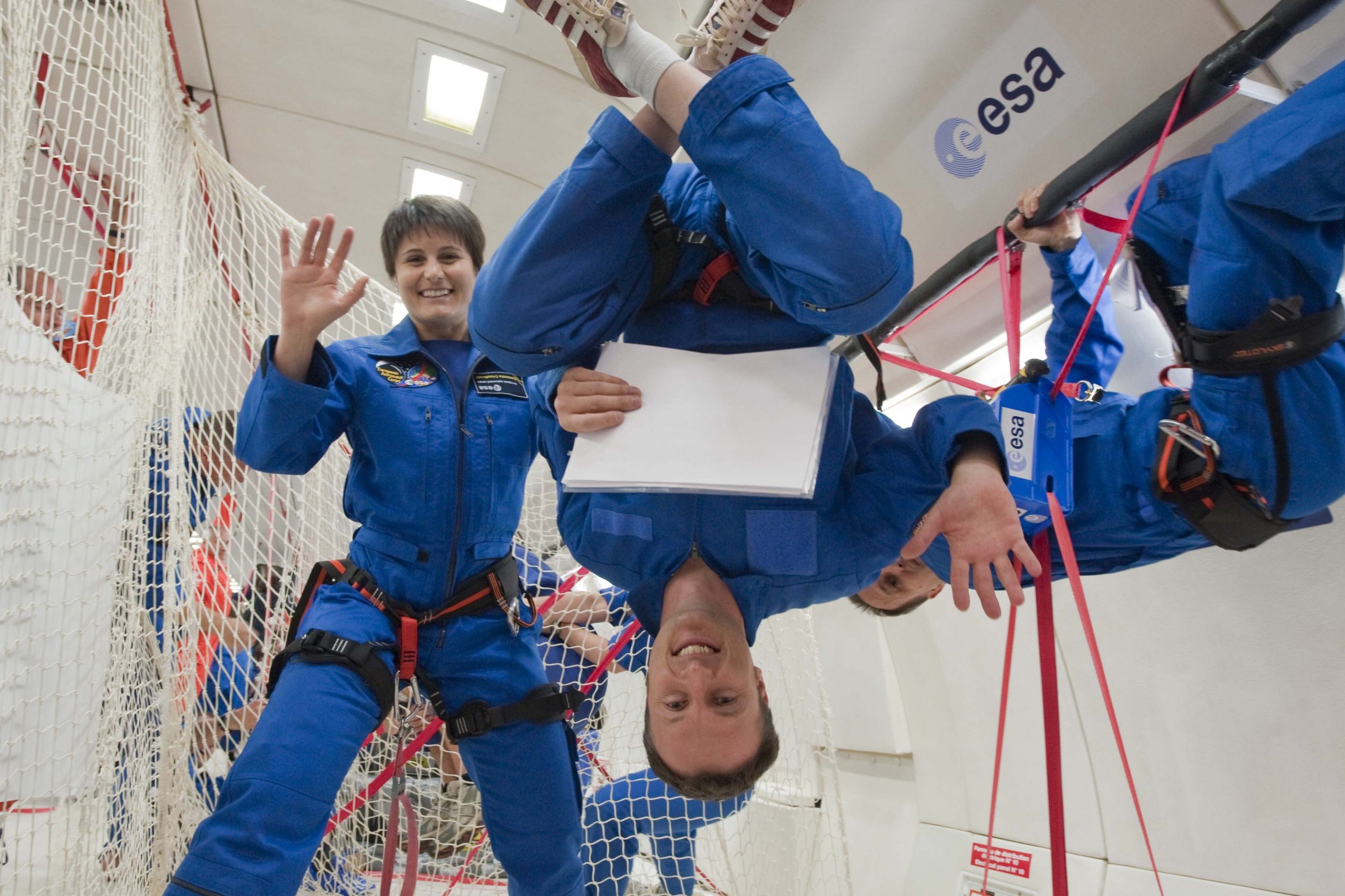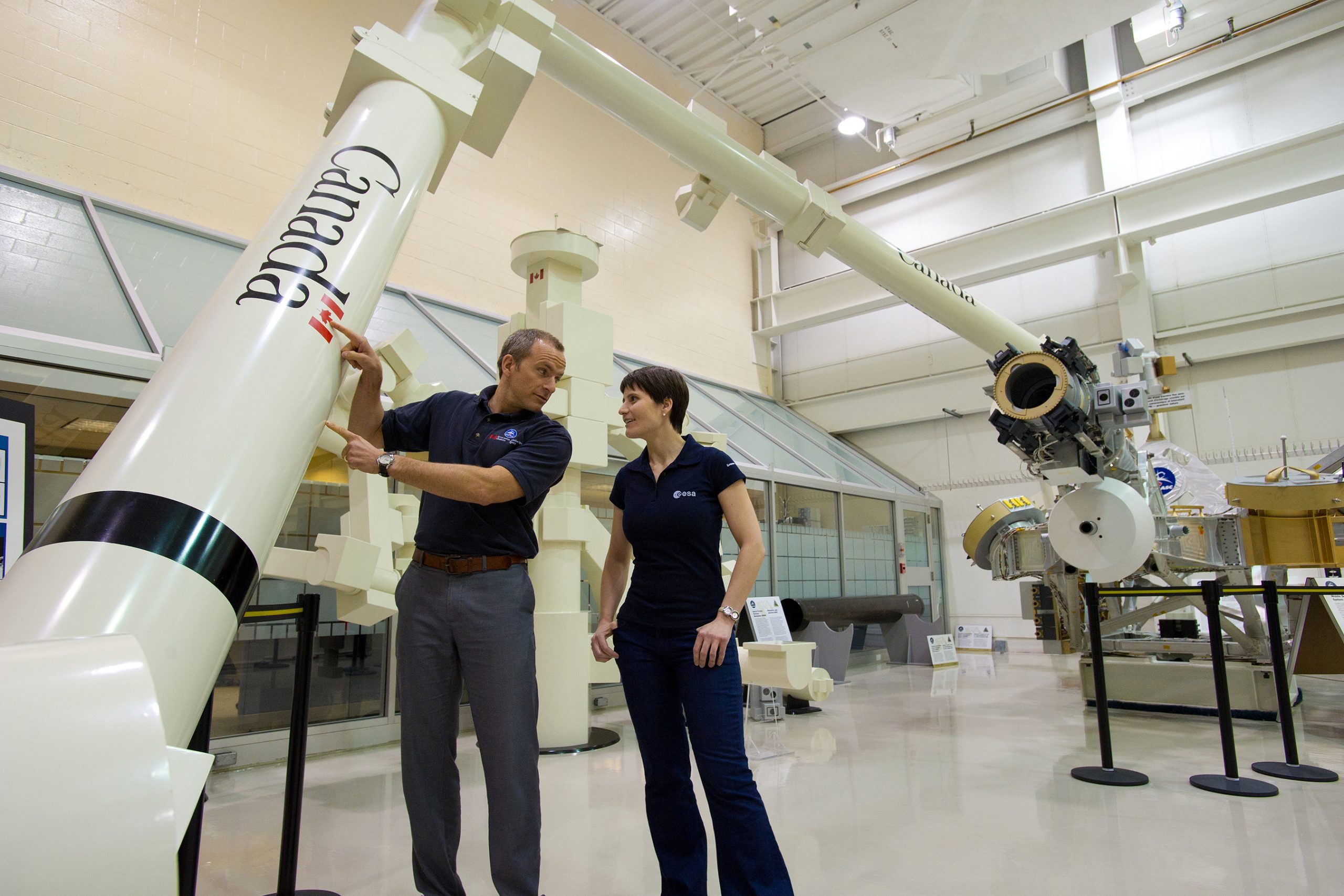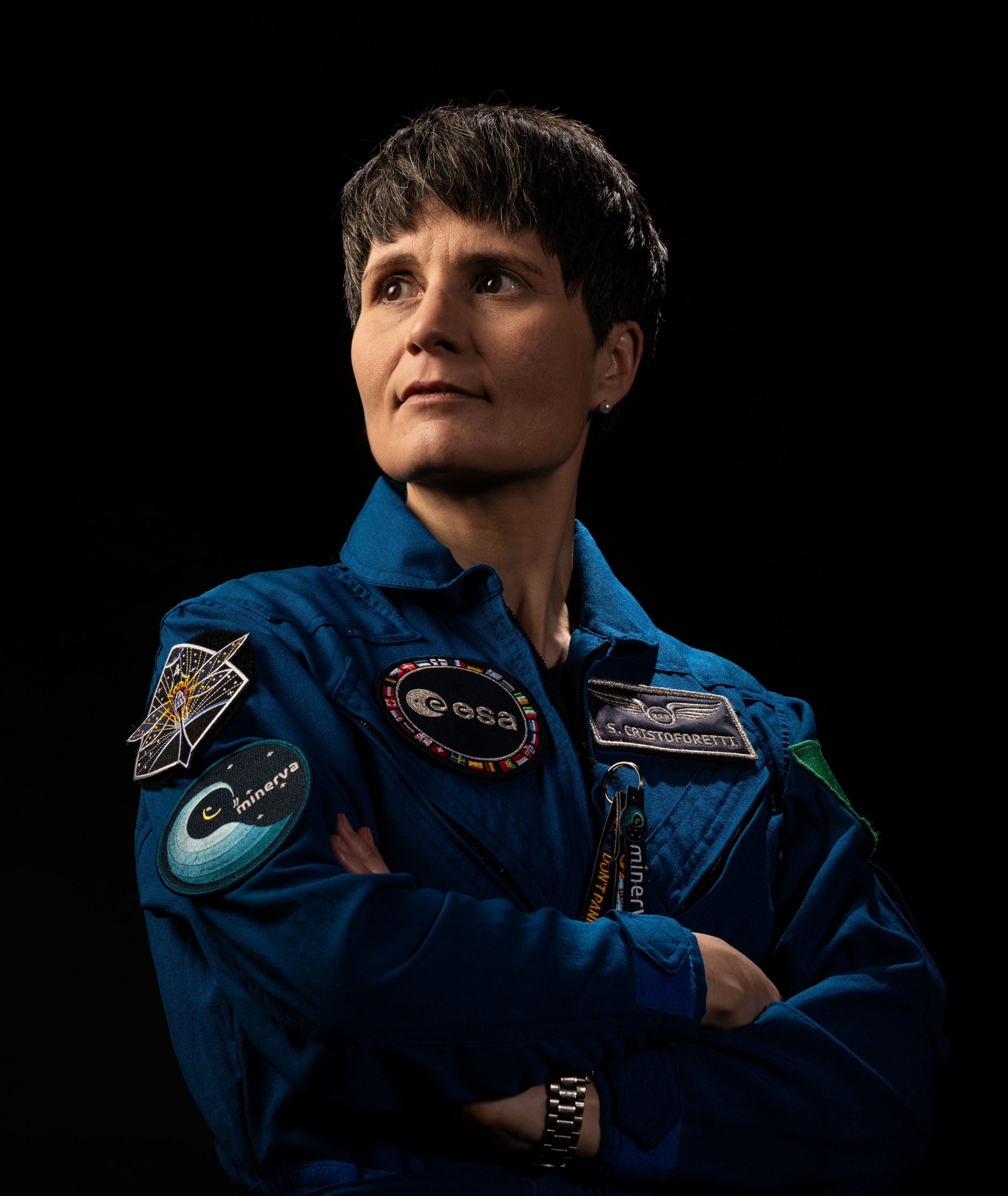ESA astronaut Samantha Cristoforetti has been assigned a second space mission and will fly to the International Space Station in spring 2022.
In a press briefing today, Samantha Cristoforetti, ESA Director General Josef Aschbacher, ESA Director of Human and Robotic Exploration David Parker and President of the Italian space agency ASI Giorgio Saccoccia announced Samantha will travel to the Station in spring 2022, following ESA astronaut Matthias Maurer.

Samantha Cristoforetti and Matthias Maurer during parabolic flight. Credit: ESA
“It gives me great pleasure to announce Samantha’s second space mission today,” says ESA Director General Josef Aschbacher. “Samantha is an excellent role model for anyone applying to ESA’s recently announced 2021/22 astronaut selection. I look forward to her continuing the essential work of European scientists in orbit as she inspires all Europeans to explore farther and reach higher for the benefit of Earth.”
“I am grateful that in the years since I returned from my first mission I have had many opportunities to grow as a professional. Leading Spaceship EAC, our team of students and young researchers working on technologies for lunar exploration, and being part of the iHAB programme, providing an astronaut’s perspective in the early development of the habitation module that ESA will provide to the Lunar Gateway, were both enriching professional experiences. I also had the chance to live for 10 days underwater as the Commander of NASA’s NEEMO23 crew, experiencing a close analogue to a space mission,” says Samantha.
“But going back to ISS, my home away from home, has always remained my aspiration. I am honoured to be entrusted with a second space mission and look forward to representing again Europe in orbit, as we continue to pursue scientific discovery and technological excellence,” she adds.
Preparation in progress
Training for Samantha’s second mission is already under way and has included International Space Station refresher sessions at ESA’s European Astronaut Centre in Cologne, Germany, and NASA’s Johnson Space Center in Houston, Texas.
In the coming months, her schedule will intensify as she brushes up on Space Station systems and procedures and trains for the specific experiments and tasks she will perform in space.
Reflecting on Futura
Samantha first flew to the International Space Station in 2014 for Italian space agency ASI’s ‘Futura’ mission, returning to Earth in a Russian Soyuz vehicle after 200 days in space.
During Futura, she supported an extensive scientific programme of experiments in physical science, biology and human physiology as well as radiation research and technology demonstrations.
Samantha also oversaw the undocking of ESA’s fifth and final Automated Transfer Vehicle (ATV) marking the end of a successful programme that paved the way for the European Service Modules currently being produced for NASA’s Orion spacecraft that will travel around and to the Moon.

Canadian astronaut David Saint Jacques (left) and ESA astronaut Samantha Cristoforetti stand next to a life-size model of the Canadarm-2 robotic arm. Credit: CSA
Italian involvement in the mission
The call for applications of the new ASI experiments is still ongoing. While waiting to train on the new experiments, Samantha Cristoforetti will follow among others LIDAL, NUTRISS, Acoustic Diagnostics, Mini-EUSO experiments, already on board on the ISS, and on which Luca Parmitano has already worked during the ESA Beyond mission in 2019.
Europe in low-Earth orbit
During ESA’s Space19+ ministerial council, Member States supported the Agency’s continued commitment to the International Space Station until at least 2030 and the provision of second flights for all astronauts from ESA’s class of 2009.
Samantha’s flight follows the second flights of her classmates Alexander Gerst in 2018, Luca Parmitano in 2019 and Thomas Pesquet in 2021, and could see a direct on-Station handover with Matthias Maurer who is scheduled to fly his first mission to the Space Station later this year.
ESA is also in the process of recruiting its next class of astronauts. For more on the upcoming 2021/22 selection visit esa.int/YourWayToSpace



